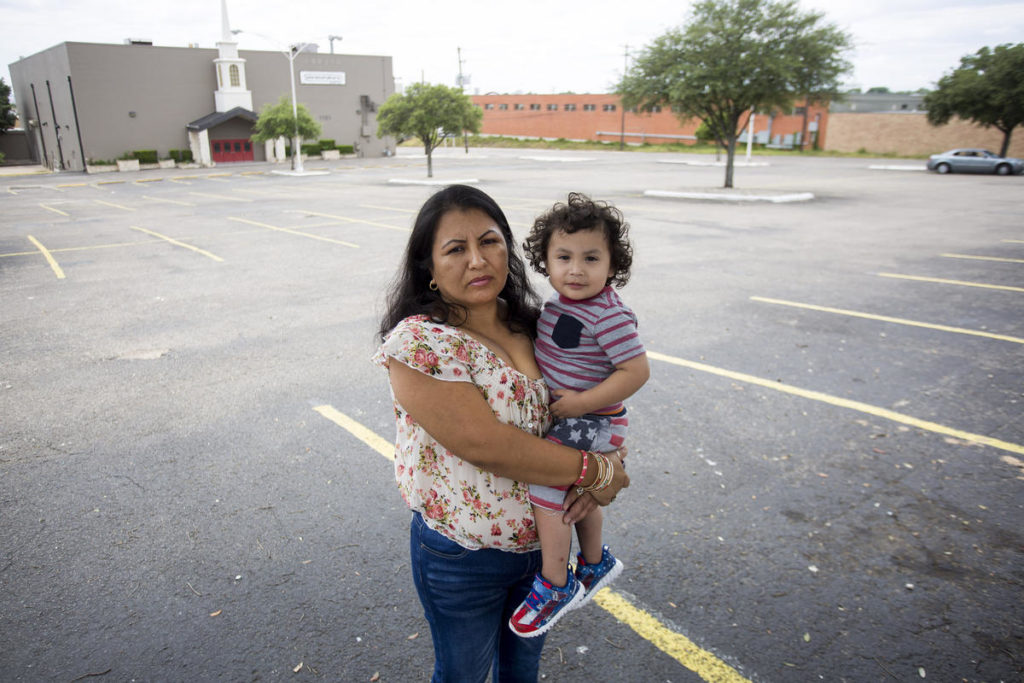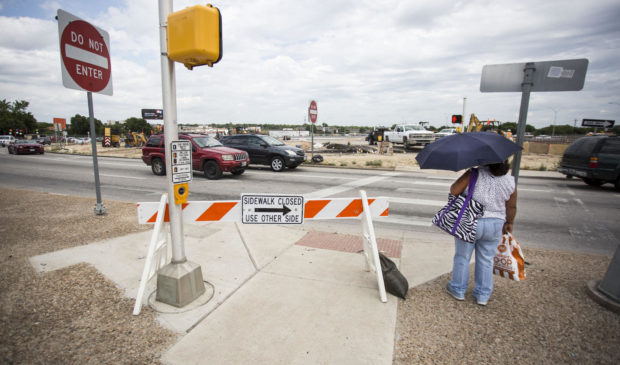For many Austinites, city parks remain out of reach
Wednesday, May 24, 2017 by
Mose Buchele, KUT From the hike and bike trail on Lady Bird Lake to Mount Bonnell, Austin is proud of its parks. But a new study ranking city parks around the country suggests that pride might not be fully justified. Austin ranked just 46 out of the 100 largest U.S. cities.
Why? Jenny Hernandez can tell you.
For five years, Hernandez has lived in a neighborhood of apartments wedged into the southeast corner of where U.S. Highway 290 meets I-35. She has two kids whom she’d love to take to a park. But the closest one, Bartholomew District Park, is a mile and a half away, she said, and she doesn’t have a car.
“Yeah, I have to walk, cross a lot of avenues, highways,” she said in her native Spanish. The streets are too large to take my kids in a stroller, “so I don’t feel safe.”

Around two-thirds of people in large cities nationwide live within a 10-minute walk to a park. In Austin, that figure is closer to half. A lot of the places with the least access are in lower-income parts of town.
That issue of access is responsible for Austin’s mid-level ranking, said Charlie McCabe with the Trust for Public Land, the group that released the rankings. He said there are a lot of factors that limit access.
“The barrier could be not enough land to build a park,” he said. “It could be a large highway that’s hard to cross.”
In the case of Hernandez’s neighborhood, both barriers appear to be in full effect.
“We have a lot of areas inside of Austin that are parkland deficient,” agreed Jeff Larsen, acting division manager of planning for the Parks and Recreation Department.
He said the city tries to put in new parks with new development. But almost all the projects listed on the department’s website are upgrades to existing public land, not new parks.
Nevertheless, the new report offers some good news for the city. Austin is about 11 percent parkland, higher than the median of 9.3 percent for other cities.
Austin also spends more on parks per capita than most places, and a recently passed transportation bond could improve access.
Larsen said the improvements “could be more sidewalks, roadways, improvement of existing infrastructure to get more people into parks.”
Even if road crossings are improved in her neighborhood, Hernandez said she still isn’t sure she’d walk. She said there are a lot of car accidents nearby, and it’s just too far a trek to feel safe with the kids.
“I prefer to wait for the bus,” she said, “but it takes a long time.”
This story was produced as part of the Austin Monitor’s reporting partnership with KUT. Photos by Gabriel Cristóver Pérez/KUT News.
The Austin Monitor’s work is made possible by donations from the community. Though our reporting covers donors from time to time, we are careful to keep business and editorial efforts separate while maintaining transparency. A complete list of donors is available here, and our code of ethics is explained here.
You're a community leader
And we’re honored you look to us for serious, in-depth news. You know a strong community needs local and dedicated watchdog reporting. We’re here for you and that won’t change. Now will you take the powerful next step and support our nonprofit news organization?










